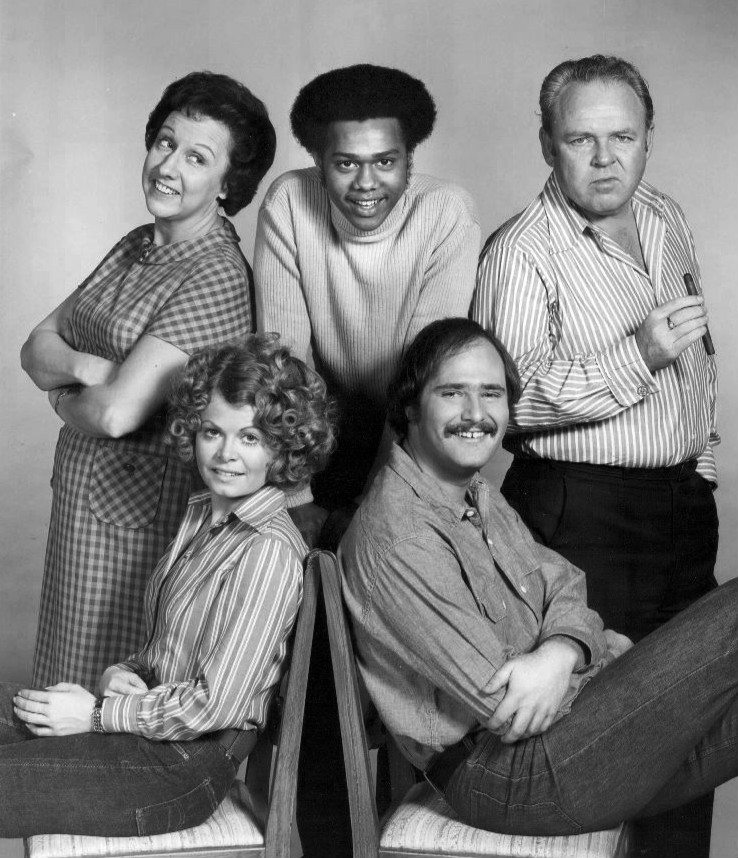
Remember the famous TV show, “All in the Family?”
Remember the famous TV show, “All in the Family?” https://csuiteold.c-suitenetwork.com/wp-content/uploads/2015/09/All_In_the_Family_cast_1973.jpg 738 858 C-Suite Network https://csuiteold.c-suitenetwork.com/wp-content/uploads/2015/09/All_In_the_Family_cast_1973.jpgby Dr. Tony Alessandra

“Edith do you know why I can’t communicate? Because I’m talking in English and you’re listening in dingbat!” Well, maybe Archie Bunker could benefit from learning how to communicate in “dingbat”! Then, he could mentally change places with Edith to understand her expectations instead of just his own.
Every day I face the potential for conflict or success with different types of people. Conflicts are inevitable, but the outcome from how you handle dissension is much more controllable. At the very least, you can manage your end of it. You can choose to treat somebody from his perspective, the way he wants to be treated by modifying your own behavior; or you can choose to meet only your own needs – facing consequences such as dissatisfaction, frustration, confusion and distress. It’s up to you.
Modify your spots
“Modify my behavior? Hey, I don’t want to change! And I hate phonies!”
I’m not talking about changing a leopard into an elephant. I mean acting in a sensible, successful way. When someone wants to move at a faster pace, move at that pace. If others want more facts and details, provide them.
But wait? Isn’t it phony to act in a way that isn’t natural for you? I think acting in a way that is responsive to Japanese behavior patterns in a Japanese environment is more likely to be appreciated and accepted there. The result is greater success! It helps dispel the stereotype that has been associated with some tourists who “act themselves” and expect others to do likewise. Of course, anything that’s new feels strange at first, until you get more comfortable with it through repeated practice.
People learn to become more adaptable through education, experience, and maturity. We simply have to allow the opportunity for appropriate behaviors to surface. As I’ve mentioned, if you’re able to put yourself in the other person’s position, you become more open-minded in dealing with him or her. When you understand the way the other person feels comfortable communicating, you can modify your approach to get on the same wavelength. You haven’t changed your own natural behavior. You’ve merely added to it additional consciously learned, behavioral insights and strengths for dealing with different types of people and situations. The best part is that people will teach you how to communicate with them if you’re willing to learn their signals by “reading” and then appropriately responding to them.
Four styles with a difference
Today’s Information Age features dozens of models of our behavioral differences. But they all have one common thread – the grouping of behavior into four categories.
Most explanations of behavioral styles have focused on internal characteristics leading to external behaviors. My model focuses on patterns of observable, external behaviors that each style shows to the rest of the world. Because we can see and hear these external behaviors, it makes it much easier for us to “read” people. Therefore, my model is simple, practical, easy to remember and use, and extremely accurate. My model divides people into four natural, core behavioral types:
- Dominant Directors: Firm and forceful, confident and competitive, decisive and determined risk-takers. While their impatience sometimes causes eyes to roll, the Directors leave no doubt who sits at the head of the table.
- Influencing Socializers: Outgoing, optimistic, enthusiastic people who like to be at the center of things. Socializers have many ideas and love to talk, especially about themselves.
- Steady Relaters: Genial team players who like stability more than risk and who care greatly about relationships with others. They are likable but sometimes too timid and slow to change.
- Conscientious Thinkers: Self-controlled and cautious, preferring analysis over emotion. They love clarity and order but may come across as a bit starchy.
So. . . which style are you?
 Dr. Tony Alessandra earned his PhD in marketing (1976) & has authored 31 books & 100+ audio/video programs. He was inducted into the NSA Speakers Hall of Fame (1985) & Top Sales World’s Hall of Fame (2010). He is also the CEO of Assessments24x7, a company that equips coaches, trainers and consultants with dozens of assessments (DISC, Motivators, HVP, etc.) from one, easy-to-use online account. Interested in one of these assessment accounts, fill out THIS FORM. Follow him on Twitter @TonyAlessandra.
Dr. Tony Alessandra earned his PhD in marketing (1976) & has authored 31 books & 100+ audio/video programs. He was inducted into the NSA Speakers Hall of Fame (1985) & Top Sales World’s Hall of Fame (2010). He is also the CEO of Assessments24x7, a company that equips coaches, trainers and consultants with dozens of assessments (DISC, Motivators, HVP, etc.) from one, easy-to-use online account. Interested in one of these assessment accounts, fill out THIS FORM. Follow him on Twitter @TonyAlessandra.



